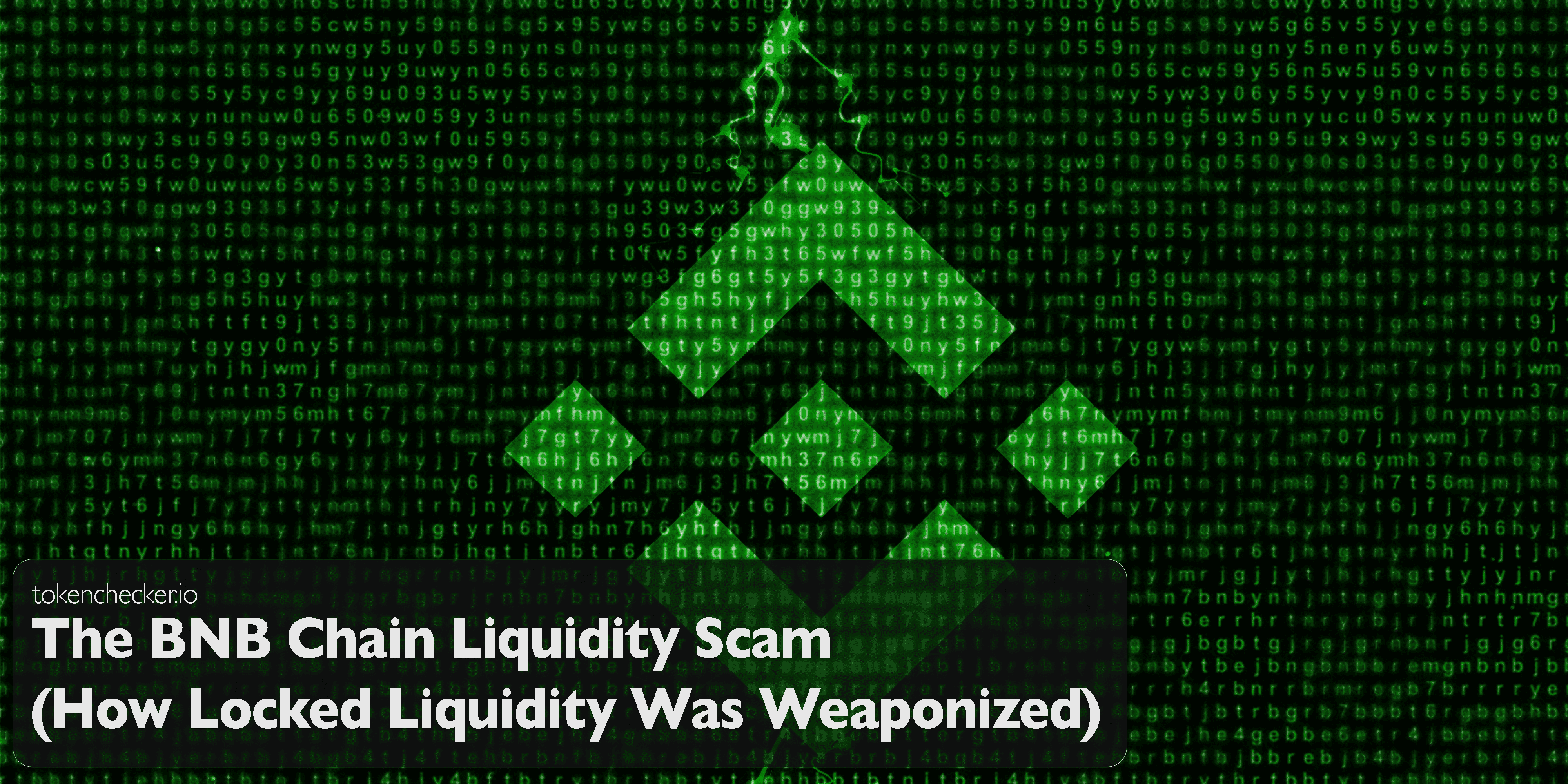
The BNB Chain Liquidity Scam (How Locked Liquidity Was Weaponized)
If you’ve ever thought, “Well, at least the liquidity is locked, so I’m probably safe…” you’re not alone. But also, you’re not safe.
Locked liquidity sounds like a security feature. In theory, it means the devs can’t pull the funds and disappear. In reality? Scammers have evolved. They’ve found ways to sidestep, bypass, or outright exploit liquidity locks—and the token can still rug, hard or soft. The fact that locked liquidity doesn't guarantee safety is a hard lesson for many.
Let’s unpack how locked liquidity gets weaponized, why it gives a false sense of security, and what you actually need to check before assuming a project is safe.
The SafeMoon Story: A Case Study in Deception
SafeMoon became a household name on BNB Chain not because of its tech, but because of its tokenomics. It promised rewards for holders, fees for sellers, and locked liquidity. It felt safe. Revolutionary, even.
But the “locked” part? That was a lie.
The DOJ and SEC later found that the developers had hidden access to the liquidity pool. They weren’t just taking profits. They were siphoning millions for personal use—all while telling the community their funds were safe.
This is the perfect example of how a token can look locked on the surface, but have backdoors built in from day one.
How They Rug Anyway: The Dirty Workarounds
Let’s talk about how devs pull off scams even with the lock in place.
- Pre-mined token dumps: The dev holds 70% of the supply in unlocked wallets. They wait for the hype, then dump on retail. Liquidity stays intact. Price crashes anyway.
- Mint functions: The contract lets the dev mint new tokens whenever they want. They flood the supply, sell into the pool, and drain value without touching the LP.
- Dynamic tax abuse: Fees are low at launch… then spike to 99% on sells. You try to exit, but your money goes to the dev wallet.
- Proxy upgrades: The contract gets swapped later for a malicious version. It looked fine at launch. Then it turns evil.
- Honeypots: You can buy, but you can’t sell. Liquidity is “there,” but locked or not, it doesn’t matter if you’re trapped. This is a classic honeypot scam.
That’s not theoretical. It happens constantly. tokenchecker.io catches this stuff daily—and if you’re not scanning contracts or testing the sell function yourself, you’re gambling blind.
Not All Liquidity Locks Are Created Equal
You’ll see a token say “liquidity is locked,” but that statement alone is meaningless unless you verify a few key things:
- What % is actually locked? If only 30% of LP is locked and the rest is withdrawable, you’re exposed.
- How long is it locked? A 7-day lock is a ticking time bomb. Solid projects usually lock for at least 6–12 months, often years.
- Where is it locked? Reputable lockers like UniCrypt, Team Finance, or PinkLock have public dashboards. If the lock info isn’t easy to verify—bad sign.
- Who controls the lock? If the dev still controls the locker or can relock/transfer LPs, it defeats the purpose.
A token might advertise “locked liquidity” and still be seconds away from collapsing.
You Also Have to Watch the Smart Contract
Even if the liquidity is handled properly, the smart contract itself could have built-in traps:
- onlyOwner withdrawal functions
- Hidden blacklist logic
- Unlimited mint access
- Malicious reinitialization functions (in proxy contracts)
- Adjustable tax mechanisms with no caps
And guess what? Most casual investors don’t read the code. That’s where tokenchecker.io steps in—it flags these exact issues with zero dev knowledge needed.
Final Thoughts
Locked liquidity is one of crypto’s favorite buzzwords. It sounds secure. It signals long-term commitment. But without the context, it’s just another checkbox scammers use to look legit.
Don’t stop at the lock. Check the code. Check the wallets. Test the trade. And use tools like tokenchecker.io to see through the smoke.
Because the rug’s still there. They’re just pulling it differently now.